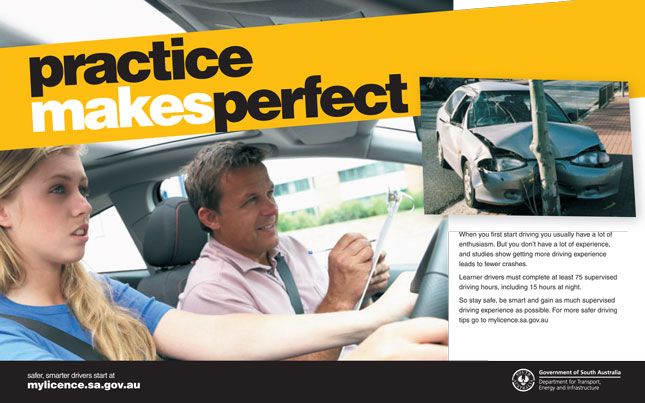The Driving Companion
Safe Driving Strategies

1. 'A Minimum Safe Following Distance'
A minimum safe following distance occurs when you allow at least three seconds interval between your vehicle and the vehicle in front. This gap should be increased if it is wet, visibility is poor, you are driving downhill, you are being tailgated or if you are tired, unwell or distracted. To measure the time interval between your vehicle and the vehicle in front, when the vehicle in front passes a stationary mark or shadow, you count ...1001, 1002, 1003... and if your vehicle passes that same mark during that count, you are too close (within three seconds).
2. 'A Minimum Safety Margin'
A minimum safety margin occurs if a safety 'cushion' of at least 1.2 metres is maintained between the side of your vehicle and stationary vehicles, bicycle riders or other objects, having regard to your speed and the possibility of danger. By slowing the vehicle considerably, smaller clearances may be given to stationary objects and parked vehicles provided due care is taken.
3. 'Acceleration Sense'
Acceleration sense is the ability of the driver to vary the speed of the vehicle by means of accurate use of the accelerator (not gears) where braking is not required. This improves smoothness of ride, vehicle control (especially on unsealed surfaces), and fuel efficiency while reducing wear and tear on the vehicle and tyres.
4. 'Safe Stopping Position Behind Other Vehicles'
Safe stopping Position behind other vehicles when stopping in a line of traffic, the driver should stop his/her vehicle at a distance behind the vehicle in front which would enable the driver to turn away should the vehicle in front break down or becomes unable to proceed. (As a guide, you should be able to see where the tyres of the vehicle in front contact the road).
The advantages in maintaining this space is that it allows:
- Better observation past the vehicle in front (enabling the driver to see into the crossroad or what may be causing the obstruction);
- Space to stop in if the vehicle in front should stall when moving off;
- Any roll back from the vehicle in front giving the driver behind time to take appropriate action (eg. sound the horn);
- If your vehicle is hit from behind, there is less chance of your vehicle being pushed into the vehicle ahead which in turn reduces the risk of both injury to you and damage to the front of your vehicle.
When stopping in a right turning lane, the driver should leave a smaller space than that above to allow for other vehicles behind entering the 'store' lane out of the path of following 'through' traffic, reducing the possibility of rear end collisions.
5. 'Avoid the temptation of doing other tasks'
Avoid the temptation of doing other tasks and getting distracted while you are driving. Taking your eyes off the road or diverting your attention even for a few seconds can be fatal. Pull over safely and park before touching your mobile phone and/or other electronic devices.
6. 'Driver fatigue can cause a driver to drift across lanes'
Driver fatigue can cause a driver to drift across lanes and also to the incorrect side of the road, putting you and other road users at risk of a crash. It is important you are aware of the signs of fatigue and plan your travel. Make sure you’ve had a good sleep prior to setting off and take regular 15 minute breaks at least every two hours.
7. 'Be patient and courteous to other road users'
Be patient and courteous to other road users, including bicycle riders and pedestrians. Give them plenty of space especially when overtaking, don’t take unnecessary risks and be mindful that they may not see you.

21































